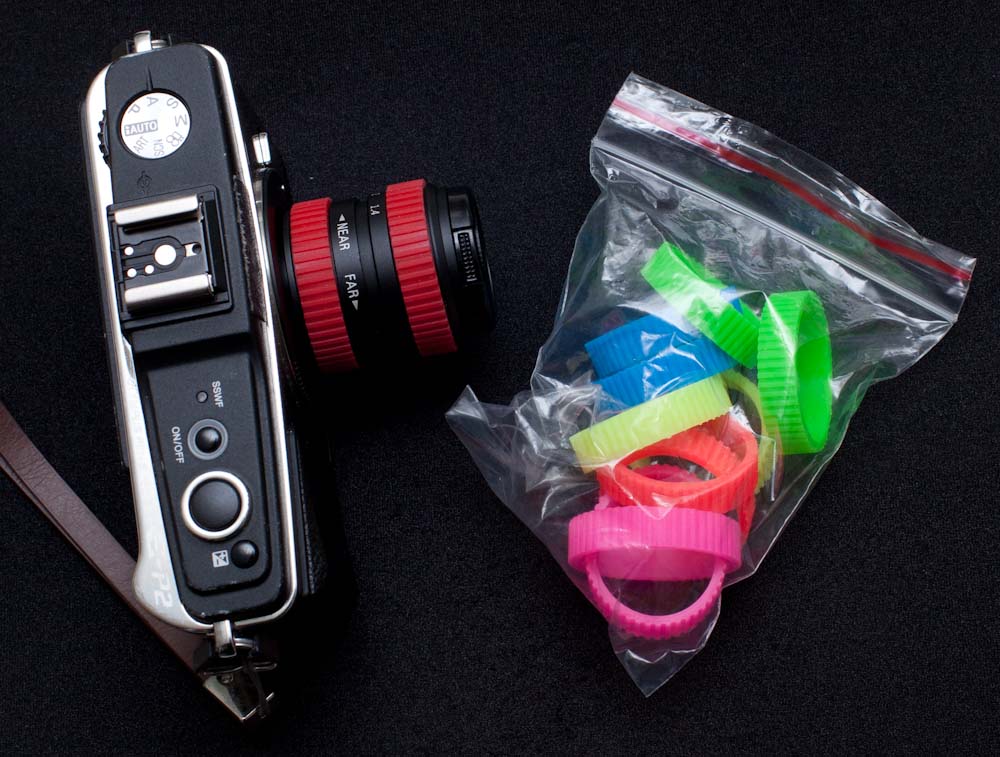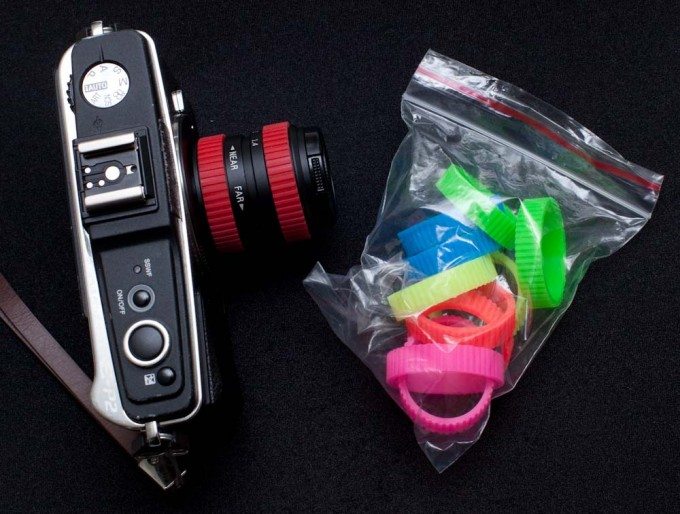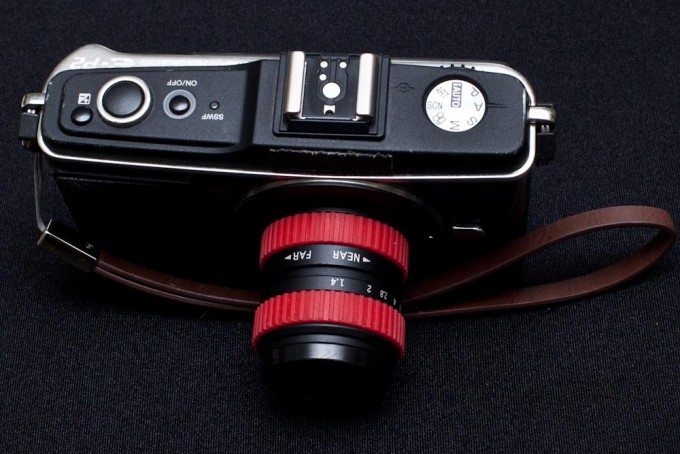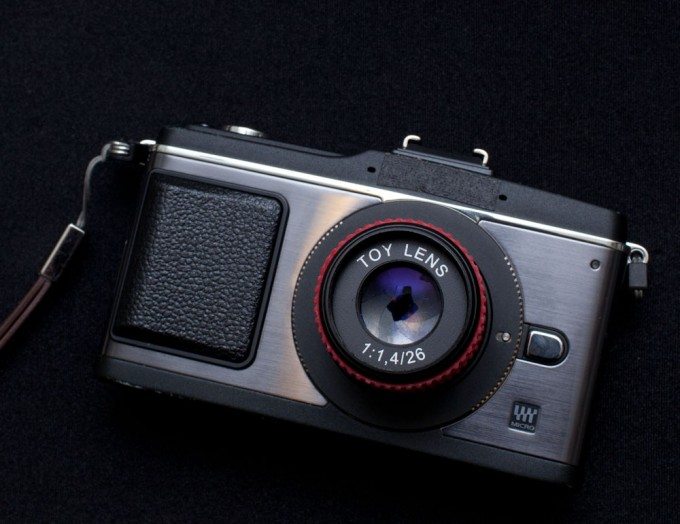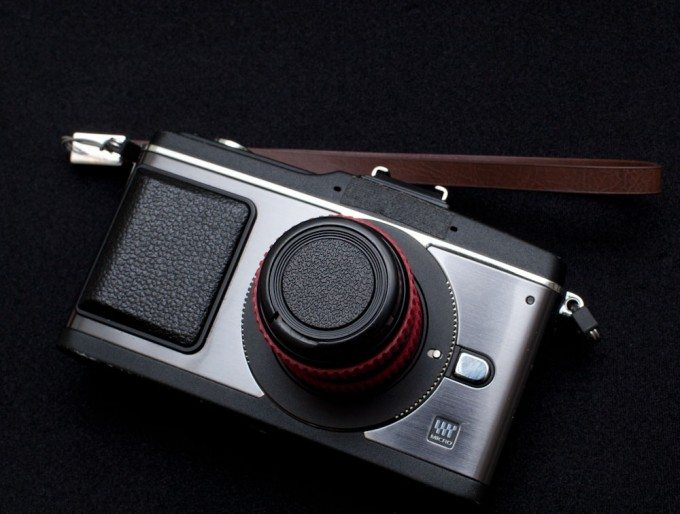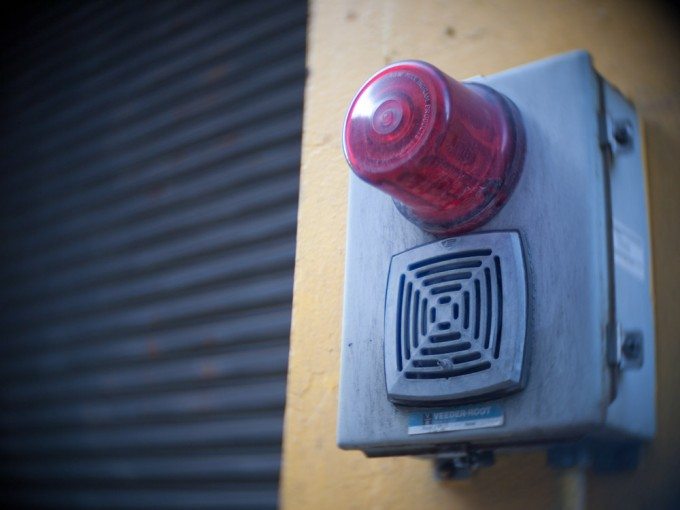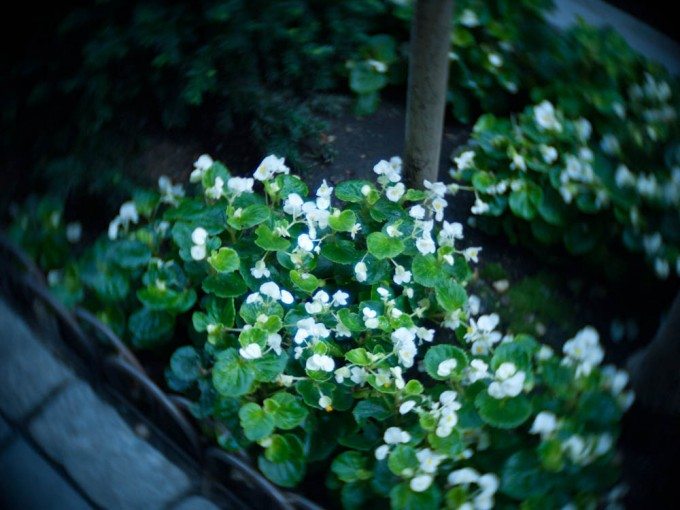Manual focus lenses are a much lusted item of most Micro Four Thirds users. So are tiny lenses to compliment the portability of the smaller micro four thirds bodies. Combine that with the fact that these cameras are very fun to use, and you’ll get a winning combination in the SLR Magic 26mm f1.4lens for Micro Four Thirds bodies. At the equivalent focal length of around 52mm, does this lens have what it takes to be loved by many?
Video Demo
Ergonomics
The SLR Magic 26mm f1.4 lens is small. When you first wrap your fingers around it, you’ll actually believe it to be similar to a rangefinder lens. Instead though, it seems to be more like a CCTV Prime, but it’s not. The lens features little markings that tell you things like the aperture and the direction to focus in order to focus closer or further.
Besides the fact that the lens has a stepless aperture ring, the aperture blades themselves are quite unusual. Instead of forming a circle, the five blades form a shape with sharp edges. Be warned though, if you close the lens too much, the blades may start to press against each other too much. That’s not all bad though. The fact that they close down so much allows you to use the lens almost like a pinhole lens. If you don’t know what I’m talking about, check out our review of the Pinwide.
On the camera, it even looks a bit weird at first. However, after using it a bit you start to get past it. Beyond the looks, the build quality of the lens is fairly solid for something being coined as a toy. In fact, the only thing wonky about the build would be the colliding aperture blades once they get too close to one another.
Focusing
The lens has a smooth manual focusing ring. However, it’s not too smooth or too loose. In fact, it’s just like the Olympus 12mm F2 (reviewed here). Manual focus lovers will greatly appreciate focusing this lens. After some time, you’lll be able to predict how far out you’re focusing. With that said, I wish that there were a distance scale on the lens and that the aperture numbers would be in a place that would actually be useful.
Because of this little factoid, it’s best to just leave the lens wide open and shoot.
In Use

This lens is small so it won’t alarm anyone around you when using it. Plus, it doesn’t even look like a serious tool at all. That characteristic comes from the little plastic interchangeable grips that can be placed around the focusing and aperture rings. Additionally, the grips actually provide the user with lots of control over the lens.
Users with larger hands may find it a bit more awkward to use the lenses, but it won’t be that bad for them. People with smaller to medium hands will have no problem turning the dials at all.
Because you will also most likely leave the lens wide open all the time, you’re best off just adjusting the focusing ring as you need. However, as you adjust the aperture, you will see the characteristics of the lens change. For example, it may vignette slightly less and then lots more again as you keep stopping down. Plus, the lens becomes very sharp when focused down but is still quite sharp wide open—providing you can focus on your subject correctly.
After a while of use though, you may not even care about the sharpness anymore: especially if you like shooting from the hip.
Image Quality
The color rendering from this lens is really quite interesting. Most things seem to have a more bluish tint to them than normal: at least when looking at the back LCD screen. However, the images still do look a bit like those from a toy camera. Additionally, the lens has other interesting characteristics that make it a joy to use.
For example, usually only subjects in the center will be sharply in focus and everything else will be very soft. Additionally, the lens renders the images like those of old Russian lenses—with swirly bokeh. This lets you put your subject in the center and then let the world around them drift off into the twisting madness that this lens creates.
Just to show you how swirly everything becomes, take a look at the above image shot in the NYC Subway. Notice the distortion and how the lines seem straighter at the center?
If you don’t like this, then perhaps the lens isn’t for you. But if you’re more experimental, this may be a feature you’ll learn to love.
Because the lens is so light, it is also great to use while on the move. While moving and shooting wide open, just pray that you’ll get your subject sharply in focus. If not—oh well! The image you created will still probably look pretty cool.
Once again, notice the swirly bokeh around the edges of this image.
Even at f1.4, you’ll still find yourself needing to crank up the ISO levels of the camera; which will obviously create image noise. That’s quite disappointing because the point of f1.4 lenses is to be able to keep the ISO levels down lower.
Perhaps the best thing about the lens though is the fact that you almost never know what you’re going to get due to the rendering of the colors, the swirly nature at the sides, and the sharpness levels.
Here are some more samples for you:
Conclusions
If you’ve gotten this far in the review and you’re sitting there saying to yourself one of these things:
– These photos aren’t sharp
– These are bad examples
– Why would I use this?
– Why didn’t he talk about the autofocusing?
– That distortion and swirly bokeh look terrible.
Then this lens isn’t for you.
Additionally, a friend of mine tested the lens on the GH2 and didn’t like it for video recording but loved it for stills. The nature of the lens renders images similar to the toy cameras of the film days.
With that in mind, this is a lens for the experimental photographer, the hipster, the film lover, or just those people that want a different look and will embrace, “technical flaws” to create better images that others aren’t creating. However, the lens still isn’t perfect. The colliding aperture blades and the backwards aperture and focusing rings can be annoying and will essentially force you to just shoot wide open and not worry about the rest.
This thinking is part of the basis that makes up the Lomography Society. In truth, it will help you to let go of being so uptight as a photographer and worrying about creating the perfect photo. Why? Because you’re never going to.
In closing, the SLR Magic 26mm f1.4 lens is recommended for creative types; and I’ll be keeping mine as I’ve grown very much in love with it.
Please Support The Phoblographer
We love to bring you guys the latest and greatest news and gear related stuff. However, we can’t keep doing that unless we have your continued support. If you would like to purchase any of the items mentioned, please do so by clicking our links first and then purchasing the items as we then get a small portion of the sale to help run the website.


